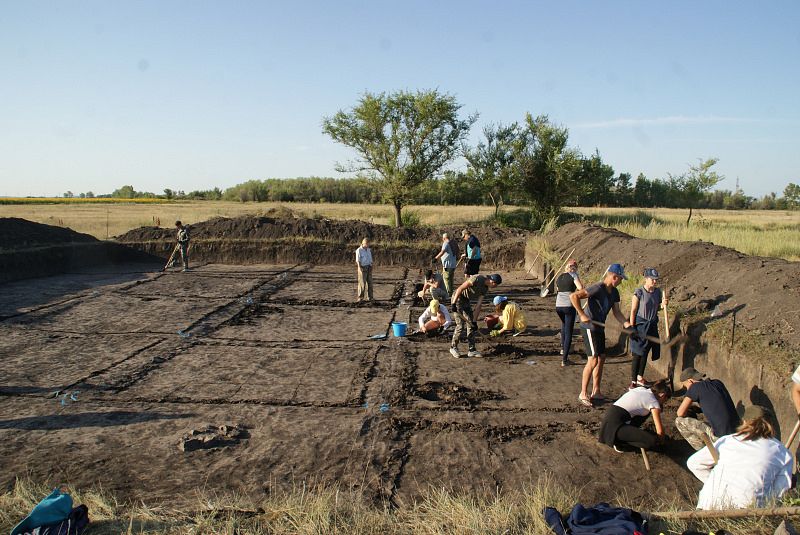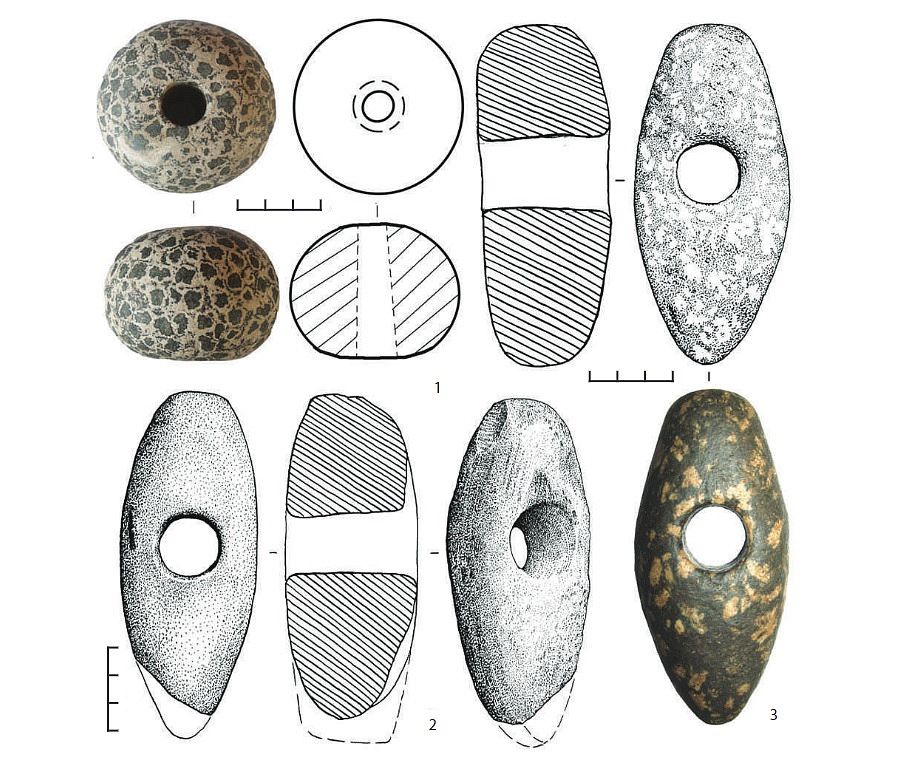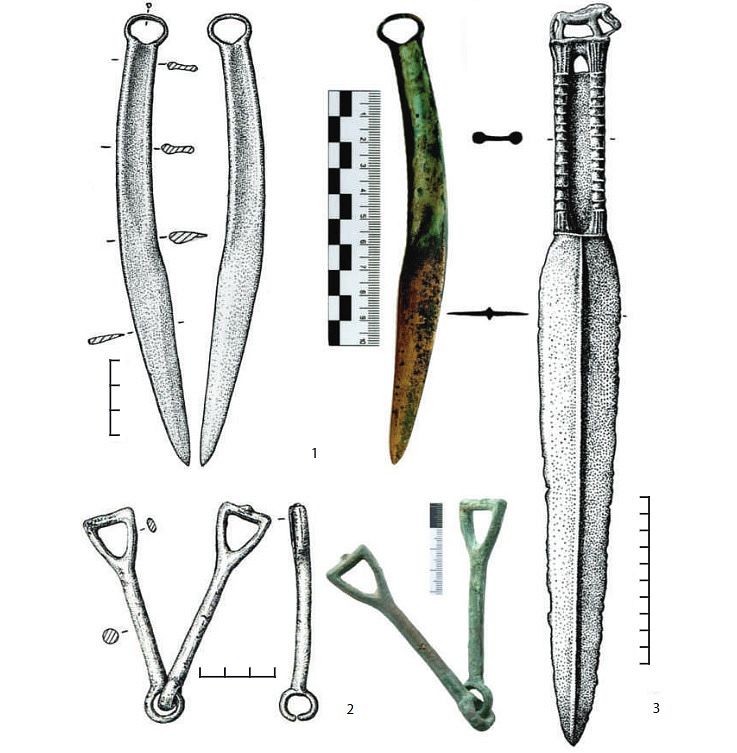Scientists of the international project "Turkic World of the Greater Altai" found new monuments of the Afanasevan culture
 In July 2021, specialists from Scientific and Educational Center for Altaic and Turkic Studies of Altai State University “The Greater Altai”, together with colleagues from Kemerovo State University, began researching the Ust-Teplaya burial ground, which contains one of the earliest burial mounds in Siberia.
In July 2021, specialists from Scientific and Educational Center for Altaic and Turkic Studies of Altai State University “The Greater Altai”, together with colleagues from Kemerovo State University, began researching the Ust-Teplaya burial ground, which contains one of the earliest burial mounds in Siberia.
These structures were a small mound on top of a circular stone layout about three meters in diameter, the archaeologists explained. In the center of the layout there was an oval pit, at its bottom a person was buried in a supine position with bent legs, sprinkled abundantly with ocher. Ceramic vessels and metal objects could be left next to it.
 According to scientists, these mounds were built at the end of the fourth - beginning of the third millennium BC by representatives of the Afanasevan culture, who brought the skills of animal husbandry and metallurgy to Altai.
According to scientists, these mounds were built at the end of the fourth - beginning of the third millennium BC by representatives of the Afanasevan culture, who brought the skills of animal husbandry and metallurgy to Altai.
“Anthropologically, the Afanasievites were proto-Caucasians with an average height of about 180 centimeters - for antiquity they were giants. The appearance of this population in Altai marked the end of the Stone Age, local representatives of the anthropological formation of hunters and gatherers, who had the appearance of an intermediate Mongoloid-Caucasoid type and lived here for thousands of years, apparently, were quickly forced out by settlers,” said Professor of the Department of Archeology, Ethnography, and Museology of Altai State University Sergey Grushin.
 Afanasevan community existed on a vast territory, covering the Sayano-Altai mountainous country, Tuva, Tarbagatai, Tien Shan, reaching Ferghana, and Xinjiang. The basis of their economy was the breeding of cattle. Scientists consider the first developments of copper ore in the entire region to be the traces of precisely these tribes, and they also own the first examples of gold, silver, and copper metallurgy in Siberia.
Afanasevan community existed on a vast territory, covering the Sayano-Altai mountainous country, Tuva, Tarbagatai, Tien Shan, reaching Ferghana, and Xinjiang. The basis of their economy was the breeding of cattle. Scientists consider the first developments of copper ore in the entire region to be the traces of precisely these tribes, and they also own the first examples of gold, silver, and copper metallurgy in Siberia.
Experts are still arguing where exactly these tribes came from, but there is no doubt that they are closely related to the so-called “pit” culture, which was widespread at the same time in the Black Sea-Caspian steppe.
In addition to Altai and Yenisei, the study of the Afanasevan sites is carried out in the Upper Irtysh region on the northern slopes of the Tarbagatai Mountains by the archaeological expedition of the Toraigyrov University (Pavlodar, Kazakhstan). Based on radiocarbon dating of a number of artifacts, the time of residence of these tribes in Tarbagatai is determined by 30-27 centuries BC.
“Only six necropolises of this culture are known in Kazakhstan, four of which we discovered over the past couple of years. These necropolises are distinguished by their originality, but they have much in common with the Afanasevan sites of other regions. We managed to determine that in the early stages of the settlement of the region, migrants built large stone fences with a diameter of 10-15 meters, at later stages - flat barrows and barrows-fences,” said Ilya Merts, researcher at the Joint Archaeological Research Center of Toraigyrov University.
Reconstruction of the economic structure, ideological foundations and relations of Western migrants with the autochthonous population will require new excavations both in Altai and in other regions where the Afanasyevites settled. The period of the Late Eneolithic, that is, the "post- Afanasevan" time in the region, remains completely unexplored, the scientists noted.
It is possible to solve these scientific problems only through the joint efforts of scientific teams from different countries of Central Asia, the archaeologists emphasized.